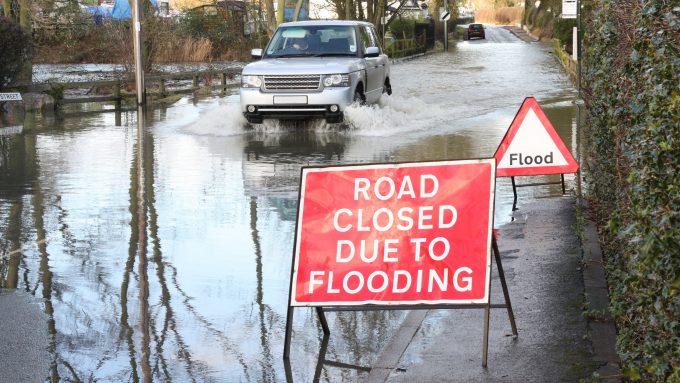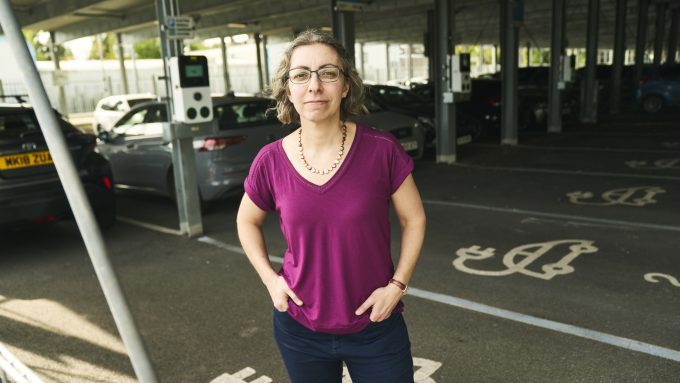
Meet the innovator providing 5G at sea

Struggling to find a mobile signal can be frustrating for those in remote locations, but no doubt scary if you find yourself in a perilous position surrounded by ocean. James Thomas would certainly say so.
The automotive and defence engineer was taking part in the 2019 Rolex Fastnet sailing race from Cowes on the Isle of Wight to southern Ireland and back in a small boat with one other member of crew. Miles out to sea off Land’s End the vessel’s battery failed, knocking out their communication and navigation systems including auto-pilot function. Not only that, but one of the sails fell overboard in high winds.
With no mobile signal, it was impossible to call for help. James managed to haul the sail out of the sea and they got going again, but with only a paper map to guide the way. “There was definitely a point when I stood there and thought if I go overboard, I’m not going to make it back,” he remembers. “And that is where my idea came from.”
During the pandemic lockdown James developed the concept of a high speed 5G communications network for the sea, that makes use of a series of platforms kept afloat by buoys. Mobile phones would connect to the network, allowing users to make calls as well as transmit and receive data.
But the idea was not just to help sailors in distress: it also promises reliable communications for engineers installing and maintaining marine infrastructure such as wind turbines generating electricity.
James founded JET Connectivity (the name uses his initials) to design the floating platforms and associated cloud-based software. Within nine months the company secured £30,000 of support to develop data distribution technology from a Transport Research & Innovation Grants programme focused on maritime decarbonisation, funded by the Department for Transport and delivered by Connected Places Catapult.
JET Connectivity has since gone on to raise significant funding from grants and customer sales. James recruited a team with complementary skills and the company now has a staff of 15 refining the technology and taking it to market.
Making connections
“We have been involved in several further programmes with Connected Places Catapult including the Maritime Accelerator and I have been invited to speak at events alongside the Department for Transport’s chief scientific advisor,” says James.
“Receiving the TRIG money was certainly beneficial, but just as important has been the support from specialists at the Catapult. They helped us build the business and create value.”James Thomas, JET Connectivity
James’s first involvement with the Catapult Network was through Satellite Applications Catapult where he met Izzy Taylor who has since joined the company. James says he now realises “just how powerful the Catapult Network is and how much they support innovation in the UK and further afield”.
Providing communications at sea is not a new proposition: satellite-based networks already exist but they can be rather expensive and are not always tailored to users’ needs, explains James. “We are trying to make a ubiquitous model for people at sea to use when they need it, rather than offering a subscription.”
How the system works
JET Connectivity’s solution involves placing floating platforms between 10 and 20km apart, which relay mobile phone signals from one installation to the other.
Testing of the floating communications network first took place in the English Channel as part of a programme called 5G Rural Dorset, led by the local council. “Our first trial was at sea, not on land, which was a big move,” says James. “Thinking back, that was a brave route to market; deploying it straight into a harsh environment and seeing what happens.
“But this way you can fail fast and learn quickly. We recovered the buoys, pulled them apart, worked out what went well and what less well.” His next step is to scale up the testing at sites in the Celtic and North seas.
The first floating platforms measured 1m tall and 1.2m in diameter and have since been made much larger: 22m tall and 12m in diameter. Bigger rigs provide more opportunity to add value, he explains, by allowing other companies to install specialist equipment such as monitors that track the condition of the seabed and movement of seagulls.
JET Connectivity has secured a contract with Scottish Power Renewables to explore the feasibility of floating networks and is in advanced negotiations with several other infrastructure providers and harbours. “We have the backing of several wind farms and green energy companies who are starting to recognise that this system could help them.”

And this week, it was announced that JET Connectivity will provide 5G solar powered buoys for a large offshore wind ‘living lab’ led by the Offshore Renewable Energy Catapult to be created off the Grimsby coast.
James also points out that the platforms will be several kilometres out to sea, so unlikely to be seen from the shore by the naked eye.
Highlights so far
Much has gone on in a short space of time for the company, but what have been the highlights so far? “Standing as a team and recognising the number of jobs we have created has been a highlight,” says James. “We recruited someone working in a butchers with a Masters degree who has done really well with us, and we took on a graduate from a Job Centre who showed real ambition. Taking risks with people and helping to build their careers has been really fun.”

And the lowest point? “No-one can prepare you for the stress of being the sole founder of a business: such as payroll, commercial negotiations, things running late. You have to roll with the punches.
“Being able to talk to people at the Catapult who recognise problems and can help you to grow has been really helpful.”
James adds that it can be tough to develop innovations in the UK, with investors less willing than in America to “throw some cash at it and see what happens. In the UK you have to really fight for it.”
His advice to other innovators starting out is: “Find cash, try not to spend the cash and recruit people with different skills sets to yourself.”





